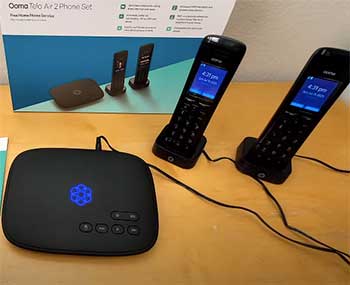As I delved into the world of home energy monitoring, I found myself at a crossroads, facing a decision that many other data-curious homeowners have encountered: Emporia or Sense? My goal was simple.
I wanted to understand where my money was going each month when the electricity bill arrived. I wanted to demystify my home’s power consumption, identify the energy hogs, and ultimately, trim down my usage.
This article is the culmination of my journey with both of these popular energy monitors. I’m here to lay out my firsthand experience, offering you a real-world, analytical comparison to help you decide which device might be the right fit for your own home.
A Head-to-Head Comparison
| Feature | Emporia Vue Gen 3 | Sense Energy Monitor |
| Primary Technology | Direct measurement with Current Transformer (CT) clamps | AI-powered device detection from main power lines |
| Appliance Identification | Monitors up to 16 individual circuits with dedicated 50A sensors. No guesswork for monitored circuits. | Uses machine learning to identify unique electrical signatures of individual appliances. Can take weeks or months to “learn” devices. |
| Installation | More involved. Requires clamping the two main 200A sensors and up to 16 individual 50A sensors to specific circuit breakers inside the electrical panel. | Simpler hardware installation. Requires clamping two sensors to the main service lines. |
| Real-Time Data | Provides 1-second data for the whole home and any monitored circuit. | Provides real-time total home consumption. Individual appliance data appears as they are identified. |
| Accuracy | Extremely high for monitored circuits (typically ±2%). The data for those circuits is a direct measurement. | Total home usage is highly accurate. Individual appliance wattage is an estimate derived from AI, so accuracy can vary. |
| Granularity | Circuit-level. You know exactly how much power your A/C, furnace, or water heater circuit is using. | Appliance-level (eventually). Aims to tell you what your toaster or refrigerator is using, regardless of the circuit. |
| Smart Home Integration | Integrates with Emporia’s own ecosystem (smart plugs, EV charger) and some third-party platforms like Home Connect. | Integrates with Amazon Alexa, Google Home, IFTTT, and various smart plugs (Kasa, Wemo) to improve device identification. |
| Cost | Lower upfront cost. Available in packages with 0, 8, or 16 circuit sensors. | Higher upfront cost for the monitor itself. |
| Subscription | No mandatory subscription for core features. An optional premium subscription offers additional features. | No subscription required. |
| Ideal User | The data enthusiast, DIYer, or homeowner who wants absolute certainty about the consumption of specific, high-load circuits. | The tech-savvy user who is patient and intrigued by AI, preferring a simpler installation and the magic of automatic device discovery. |
My Journey Into A Data-Driven Home
It all started with a higher-than-expected electricity bill. It wasn’t just a one-off; it was a trend. My monthly statements were creeping up, and I had no clear answer as to why. Was it the aging air conditioner?
The kids leaving lights on?
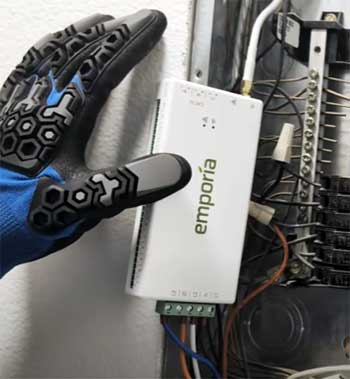
My newfound habit of running the dishwasher more frequently?
The lack of concrete answers was frustrating.
I’m the kind of person who likes to measure things to manage them, and my home’s energy consumption was a complete black box.
This sent me down the rabbit hole of home energy monitors.
I quickly discovered that the market had two dominant players, each with a fundamentally different philosophy on how to solve this problem: Emporia and Sense.
On one hand, there was Emporia, with its promise of direct, unambiguous measurement.
On the other, Sense, with its futuristic allure of artificial intelligence doing the hard work for me.
Being an analytical person, I couldn’t just pick one based on marketing blurbs. I needed to experience them both. So, I decided to install both systems in my home to see which one would truly give me the insights I craved.
This is the story of that showdown, a detailed account of living with both Emporia and Sense, the triumphs of data discovery, and the tribulations of installation and AI learning curves. My hope is that by sharing my experience, I can make your decision a whole lot easier.
Meet The Contenders: A Tale of Two Philosophies
- Emporia Vue: The Meticulous Accountant
The Emporia Vue system arrived in a neatly packed box, filled with the main monitoring unit, two large 200-amp CT clamps for the service mains, and a bundle of sixteen smaller 50-amp CT clamps.
From the moment I opened it, I understood Emporia’s approach: precision through direct measurement. The idea is to attach a sensor to every circuit you care about. This way, there’s no guessing.
You know exactly how much power is flowing to your kitchen outlets, your HVAC system, or your electric dryer because you have a dedicated monitor right on the wire.
The installation was, as expected, a more hands-on affair. If you are not comfortable opening your home’s electrical panel and working around live wires, this is a job for a professional electrician, without question.
I have some experience with home electrical work, so I proceeded with extreme caution. The process involved turning off the main breaker, finding a safe place to mount the Vue unit inside the panel, and then carefully clamping the two main sensors around the thick cables coming into my home.
The next, and most time-consuming, part was connecting the smaller sensors. I had to identify the circuits I was most interested in—the air conditioner, furnace, water heater, kitchen appliances, and so on.
For each one, I had to trace the wire from the breaker, open the corresponding CT clamp, and snap it around the hot wire. It was a bit like performing surgery in a very cramped space, carefully routing the sensor wires back to the main unit.
It took a good hour of meticulous work, but when it was done, I had a system that was physically connected to the energy arteries of my home.
- Sense Energy Monitor: The AI Detective
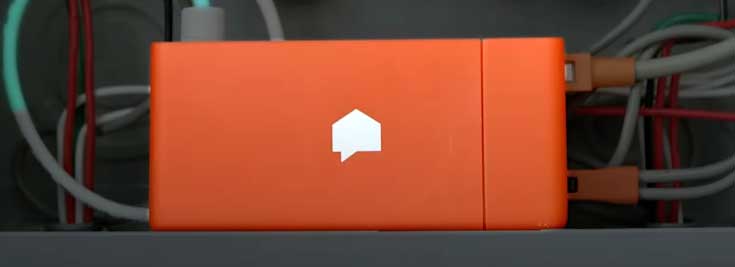
In contrast, the Sense monitor’s box contained far fewer components: the monitor itself, a power cable, and just two CT clamps. The philosophy here is entirely different. Instead of brute-force measurement of individual circuits, Sense aims for elegance and intelligence.
It clamps onto the same two main power lines as the Emporia, but that’s where the physical monitoring stops. From there, it’s all about the software.
Sense listens to the total electrical noise of your home. It samples the current and voltage over a million times per second, looking for the unique electrical signatures that every device creates when it turns on or off.
A toaster, a refrigerator compressor, a variable-speed fan—they all have a distinct electrical footprint. Sense’s job is to learn these footprints and, over time, tell you not just that you’re using energy, but what is using it.
The installation was significantly quicker and less cluttered than the Emporia. I shut off the power, clamped the two sensors onto the mains, connected the power cable to an empty 240-volt breaker, and mounted the small orange box.
The whole hardware setup took about 20 minutes. The real “work” with Sense, as I would soon find out, happens after you turn the power back on and the AI begins its learning process.
The Feature-by-Feature Showdown of Emporia And Sense Energy Monitor
- The Installation Experience
As I’ve touched on, the installation process is a major differentiator. The Emporia Vue installation is undeniably more complex. Managing 16 sensor wires inside an already crowded electrical panel can be a challenge. It requires patience and a good sense of organization to keep things tidy and safe.
However, the payoff is immediate. The moment you power it up and open the app, you get real, hard data from the circuits you’ve chosen to monitor. There’s a profound sense of satisfaction in seeing the numbers roll in, knowing they are direct measurements.
Sense offers a much more streamlined and less intimidating installation. With only two sensors to attach to the mains, the physical part is quick and easy for anyone comfortable (and qualified) to be inside their electrical panel. It’s a much cleaner setup with fewer wires to manage.
This simplicity is a huge selling point, but it comes with a trade-off: the data isn’t immediately granular. You’ll see your total home usage right away, but the magic of appliance detection takes time.
- The App and User Interface
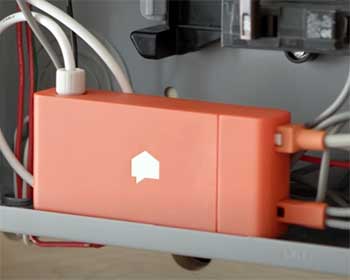
Both Emporia and Sense have well-designed mobile apps that serve as the window into your home’s energy life.
The Emporia app is all about the numbers.
It presents a clean, real-time graph of your total power consumption.
Below that, it lists every circuit you have a sensor on, each with its own real-time wattage reading.
You can tap on any circuit to see its historical usage by the minute, hour, day, week, or month.
It’s incredibly powerful for analysis.
For example, I could isolate my air conditioner and see exactly when it kicked on, how long it ran, and how much it cost me during a heatwave. The app feels like a precise tool for a user who wants to analyze specific data sets.
The Sense app, on the other hand, is designed to tell a story. Its main screen features a “bubble” interface, with circles representing your total usage and newly discovered devices. It’s more visual and, frankly, a bit more fun.
Over time, as it finds devices, you can tap on a bubble labeled “Refrigerator” or “Coffee Maker” to see its usage stats. The timeline view shows you a log of when devices turned on and off throughout the day.
The experience is less about raw circuit data and more about understanding the rhythm and flow of your home’s activity. It feels more like an intelligent assistant than a raw data tool.
- The All-Important Appliance Detection
This is the core battleground where Emporia and Sense diverge completely.
Emporia’s approach is foolproof, albeit limited. With its individual sensors, it doesn’t “detect” appliances in the way Sense does; it measures circuits. If my air conditioner is on its own circuit, Emporia tells me with near-perfect accuracy how much energy that circuit is using.
The “Appliance Monitoring” is essentially circuit monitoring. The major pro here is certainty. The con is that if you have a circuit with multiple devices (like your living room outlets), Emporia can only tell you the total consumption for that circuit, not which device is the culprit.
You’re also limited to the 16 circuits you can monitor.
Sense is where the magic—and the frustration—lies. Its AI-powered detection is a marvel of technology when it works. My first “Aha!” moment came about a week in when it correctly identified my refrigerator.
It was genuinely exciting to see it pop up in the app. Over the next few months, it slowly but surely found my garage door opener, my microwave, and my dishwasher.
However, the process requires immense patience. For weeks, my list of devices was filled with cryptic names like “Motor 1,” “Heat 4,” and “Unknown Device.” Sometimes it would get confused. My toaster and my hairdryer, having similar heating elements, would sometimes be misidentified.
There are still devices in my home that Sense has yet to find after more than a year. The learning period is real, and for those seeking instant gratification, it can be a source of annoyance. You have to be willing to play the long game with Sense.
- Accuracy and Granularity
When it comes to accuracy, it’s a nuanced comparison. For total home consumption, both monitors are excellent. I compared their weekly totals to my utility company’s data, and both were consistently within a 1-2% margin of error.
The difference is in the granularity. Emporia provides surgically precise data for the 16 circuits it monitors. I know, without a doubt, the energy cost of running my electric water heater. That data is directly measured and incontrovertible. This is its greatest strength.
Sense’s accuracy for individual appliances is a different story. The numbers it provides are educated estimates derived from its algorithms. For simple, single-state devices like a toaster, it’s usually very accurate.
For complex, variable-speed devices like a modern washing machine or my HVAC fan, the numbers can be less precise. While Sense gives me a good idea of what an appliance is using, Emporia gives me the hard facts for the entire circuit.
- Smart Home Integration
Both monitors offer integrations, but they reflect their core philosophies. Emporia is building its own ecosystem. It integrates seamlessly with Emporia Smart Plugs, allowing you to drill down and measure individual devices on a shared circuit.
It also connects with their EV charger for smart charging schedules. The focus is on controlling and managing energy within its own product family.
Sense takes a more open approach. It integrates with popular smart home platforms like Amazon Alexa and Google Home, allowing you to ask, “Alexa, how much power is my house using right now?”
More importantly, it can integrate with third-party smart plugs from brands like Kasa and Wemo. This is a brilliant feature. If Sense is struggling to identify a specific device, you can put it on a supported smart plug, and Sense will use that data to learn its signature much faster. This can help overcome some of the AI’s learning limitations.
Pros And Cons of Emporia And Sense Energy Monitor
Emporia Vue
Pros:
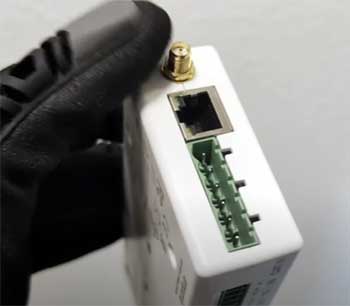
- Unquestionable Accuracy: For the circuits being monitored, the data is a direct measurement. This provides a high degree of confidence.
- Instant Granularity: From the moment it’s installed, you get detailed data on up to 16 specific circuits. No waiting for an AI to learn.
- Lower Upfront Cost: The hardware, even with 16 sensors, is generally more affordable than the Sense monitor.
- Excellent for High-Load Circuits: It’s the perfect tool for tracking your biggest energy consumers like HVAC systems, water heaters, and EV chargers with precision.
- No Guesswork: You label the circuits yourself, so you always know what data you are looking at.
Cons:
- Complex Installation: The process is more involved and can be intimidating for those not comfortable inside an electrical panel. The number of wires can make for a crowded panel.
- Limited Scope: You can only monitor 16 circuits. Any device not on a monitored circuit is simply lumped into your “Balance” or “Other” usage.
- No Individual Appliance Detection: It cannot distinguish between multiple devices running on the same circuit.
Sense Energy Monitor
Pros:
- Simple Installation: The hardware setup is much quicker and cleaner, with only two main sensors to install.
- Whole-Home Appliance Detection: The AI’s ability to find and identify individual devices automatically feels like magic and provides a unique level of insight.
- Great User Interface: The app is visually engaging and does a good job of presenting complex data in an easy-to-understand narrative.
- Strong Smart Home Integrations: Works well with Alexa, Google Home, and third-party smart plugs, which can enhance its detection capabilities.
Cons:
- The Waiting Game: The AI learning period can be long and sometimes frustrating. It requires a significant amount of patience.
- Detection is Not Perfect: It can misidentify devices or fail to find some devices altogether, especially those with low power draw or complex electronic signatures.
- Accuracy Can Be Variable: While total usage is accurate, the wattage assigned to individual devices is an estimate and may not be perfectly precise.
- Higher Upfront Cost: The initial investment for the Sense monitor is higher than for the Emporia Vue.
Who Should Buy Which Monitor?
After living with both systems, I’ve come to a clear conclusion about who each product is best for. This isn’t a case of one being definitively “better” than the other; they are different tools for different types of users.
- You should choose the Emporia Vue if: You are a data-driven individual. You’re an engineer, an electrician, a meticulous budgeter, or a DIY enthusiast who wants hard, verifiable numbers for specific parts of your home. Your primary goal is to track your biggest energy hogs with maximum accuracy. You don’t mind a more involved installation process to get that precision, and you want to see actionable data from day one.
- You should choose the Sense Energy Monitor if: You are a technology enthusiast fascinated by the power of AI. You want a “set it and forget it” installation and are willing to be patient as the system learns about your home. You’re more interested in the overall story of your home’s energy use—what turns on, when, and for how long—than in the precise wattage of a specific circuit. You value a sleek user experience and smart home integrations.
Frequently Asked Questions (FAQ)
The Emporia Vue is highly accurate, typically within ±2% of your utility meter’s readings for total consumption. For individual circuits monitored with its 50A sensors, the accuracy is exceptionally high as it is a direct measurement.
Besides Sense, other competitors in the home energy monitoring space include Span, IotaWatt, Shelly 3EM, and Neurio.
Yes, Emporia is a US company headquartered in Littleton, Colorado.
No, the core features of the Emporia Vue, including real-time and historical energy monitoring, do not require a subscription. They do offer an optional premium subscription for enhanced features like detailed data exporting and advanced automation.
Conclusion: Empowering Your Energy Decisions
My journey with the Emporia Vue and the Sense Energy Monitor has been incredibly enlightening. I went from being in the dark about my energy consumption to having a wealth of data at my fingertips.
I’ve been able to identify a faulty refrigerator in my garage that was cycling constantly and pinpoint exactly how much my evening video game sessions were costing me.
So, which one is right for you?
If you want the undeniable, granular truth about your home’s main circuits and you want it now, the Emporia Vue is your answer. It’s a powerful, analytical tool that gives you precise, actionable data that you can trust implicitly. You will gain immediate insight into where your energy dollars are flowing.
If you are captivated by the promise of artificial intelligence, desire a simpler installation, and have the patience to let a system learn the unique personality of your home, then the Sense monitor is an amazing piece of technology. You will be rewarded with a dynamic and intuitive overview of the devices that make up your daily life.
Ultimately, both the Emporia and the Sense empower you with knowledge. They turn the abstract concept of your electricity bill into something tangible and manageable.
By choosing the monitor that aligns with your personality and your goals, you are taking the first, most important step toward a smarter, more efficient, and more informed home.

